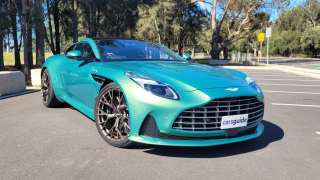Put simply, we don’t yet know how much the Zeekr 7X will cost. In fact, Zeekr in Australia probably hasn’t even decided how much it will cost yet. For a clue, though, pricing was just revealed in Europe, the 7X’s first export market.
There, it starts from roughly $75,000 for a base rear-wheel drive version, although it’s worth noting Geely group vehicles attract a 18.8 per cent tariff in Europe, and therefore we’d expect it to be quite a bit cheaper in Australia.
However, it will also need to steer clear of its much smaller Zeekr X sibling, which comes in two variants priced at $56,900 and $64,900, respectively. Based on these two factors I think it’s fair to speculate a range of $65,000 to $80,000 depending on variant.
On the topic of variants, expect three as the brand will look to mirror its range in China (as it has already done in Europe).
Kicking off proceedings is a standard range RWD with a 75kWh battery pack good for a 480km driving range on the WLTP cycle.
Then there’s a Long Range RWD variant with a 100kWh battery pack good for a 615km driving range, and finally there’s a Performance AWD.
For anyone shopping around for an EV, especially in this mid-size segment this will be a very familiar line-up.

It also boasts a solid amount of equipment, although some particularly impressive items available in its Chinese home market won’t be available in Australia thanks to some buzzkill ADRs.
Still, you can expect extensive Nappa leather interior trimmings, not just the seats and wheel, but in the console and across the dash, too, with a full array of electric adjustments for the front seats with heating (EU cars have the option for ventilation and message functions, too).
It immediately leaps out at you on the tech front with a 16-inch 3.5K centre multimedia touchscreen. This unit is ultra-fast (using a Qualcomm Snapdragon chip, for those who care) and has clever graphics on the home screen which show the surrounding weather conditions thanks to its always-online suite.
For those sick of cars without instrument clusters, the 7X gets a 13-inch unit for the driver and there’s also an option to add a 36.2-inch head-up display (at least on EU-market cars).
On the outside there are a set of LED headlights and tail-lights, frameless doors and 19-inch alloys.
Stepping up a grade on Euro-spec cars nets some minor items alongside the larger battery, including an auto-dimming rear vision mirror, and a power-adjustable steering wheel, while the top-spec all-wheel drive adds a significant boost to performance, active air suspension, upgraded brakes and perforated leather trim on the inside.

Again, these standard items might not mirror what ends up being available in Australia, but it should give you at least a good indication of what kinds of things to expect.
Some particularly cool things on the Chinese market versions we drove which can’t come to Australia thanks to design rule limitations include the pixel pattern panel on the front of the car (which adds quite a lot of personality to it), as well as a big electrically-folding touchscreen panel and tray table on the back of the driver’s seat perfect for entertaining kids.
Like Europe, it’s also possible we won’t get all the interior options available in China either, like the Ming Dynasty vase-inspired blue and cream interior trim option.
The other thing to note is despite its premium positioning, expect Zeekr to continue to undercut electric mid-size SUV rivals like the Audi Q6 e-tron, BMW iX3 and the Genesis GV70 electrified.
While the brand agreed comparisons to Tesla’s Model Y are “inevitable”, the car doesn’t really feel like a competitor, because its larger and also because it clearly intends to shoot above the mainstream space with its specs and interior feel.
Perhaps the biggest threat to the 7X though will be the surprisingly plush Xpeng G6 (from a crazy low $54,800) which should be arriving in customer hands imminently.

















